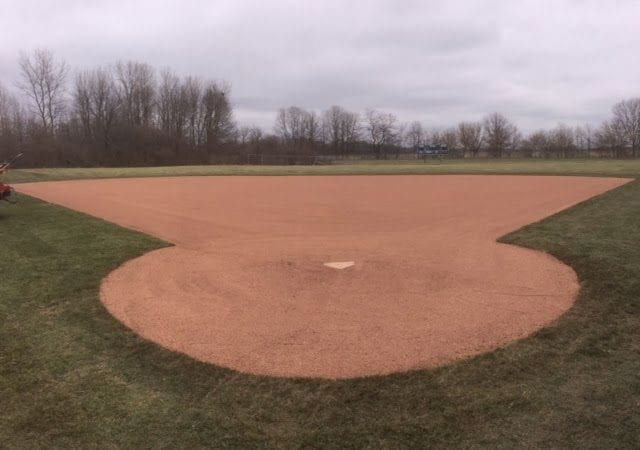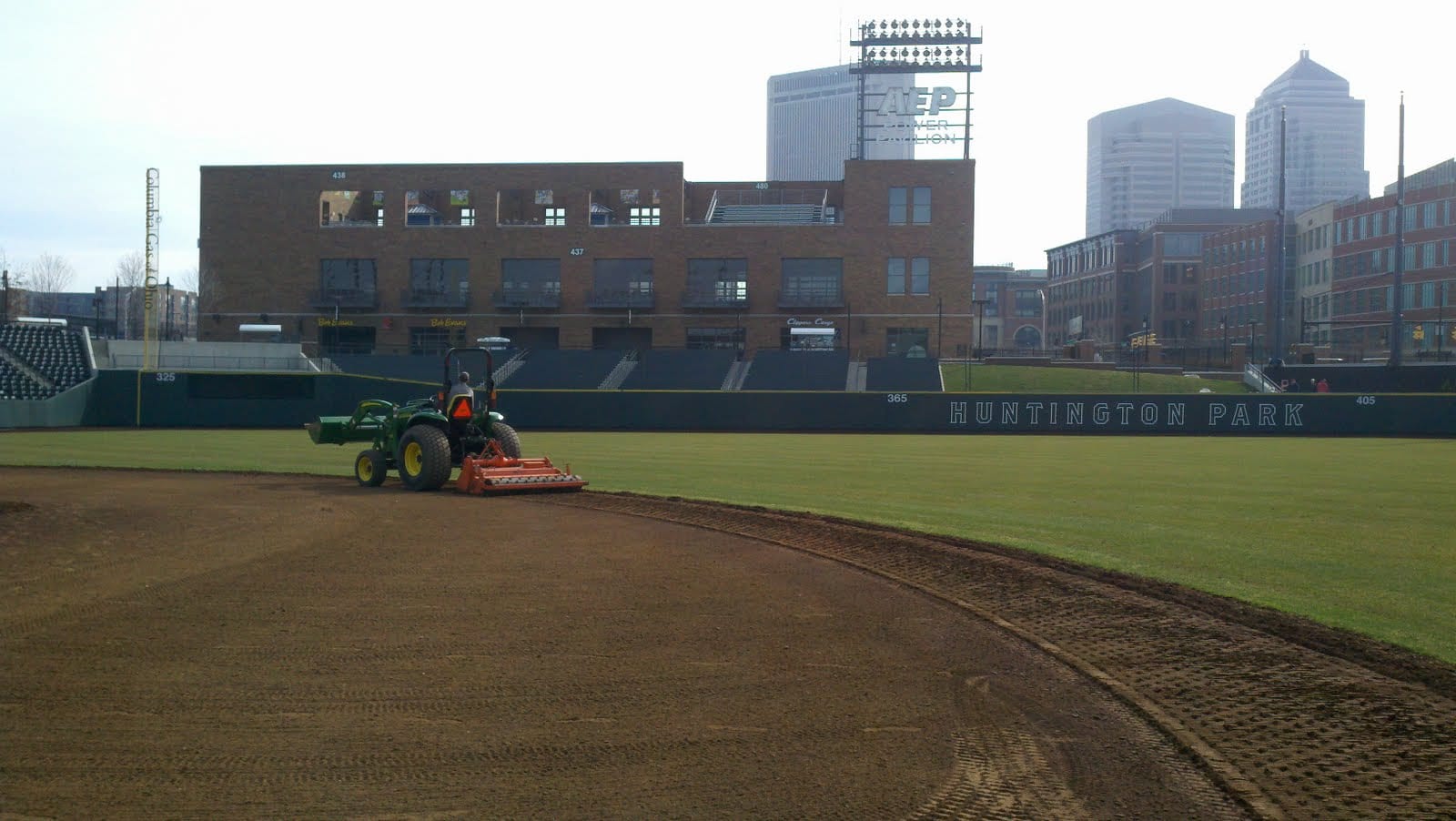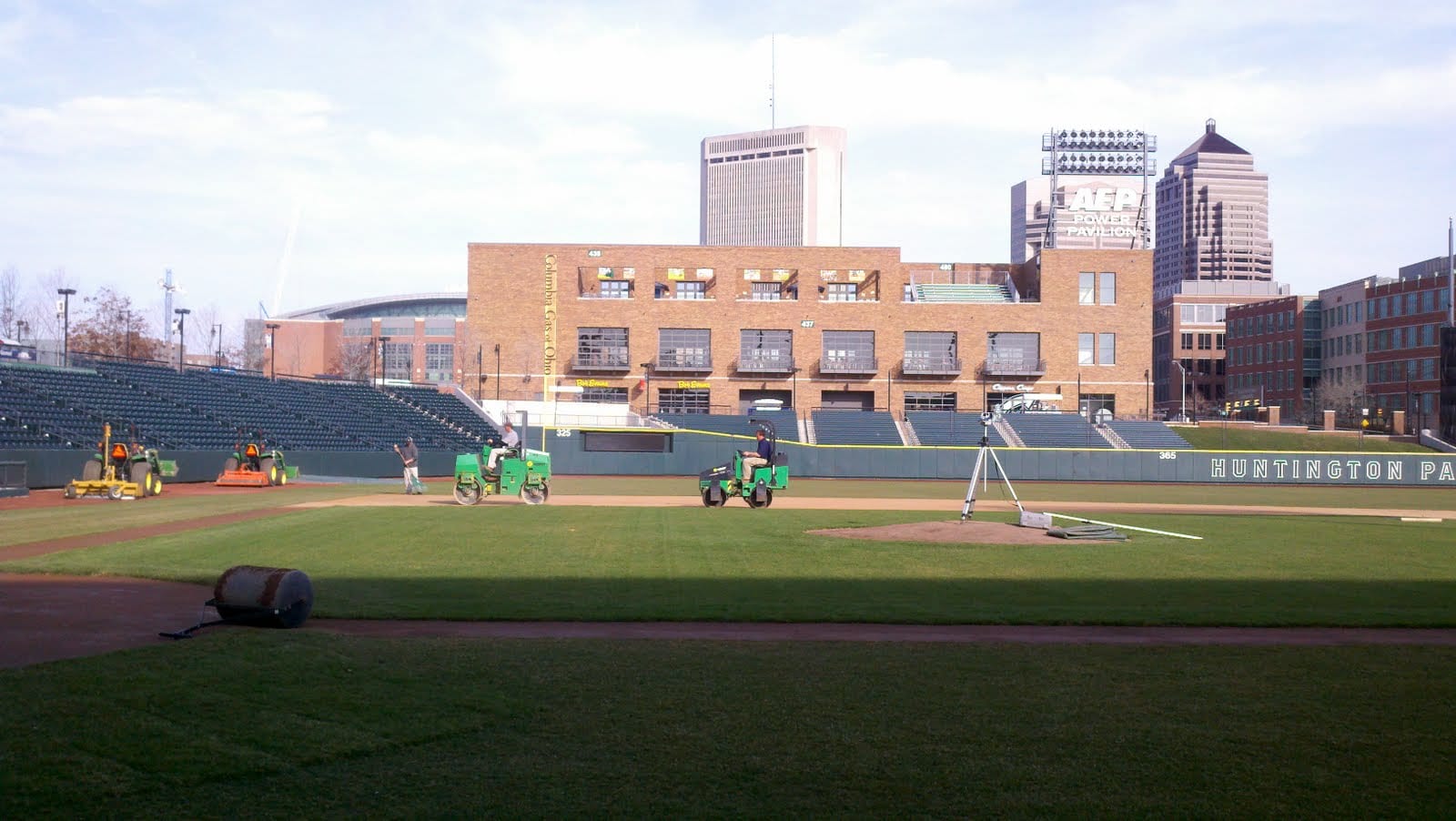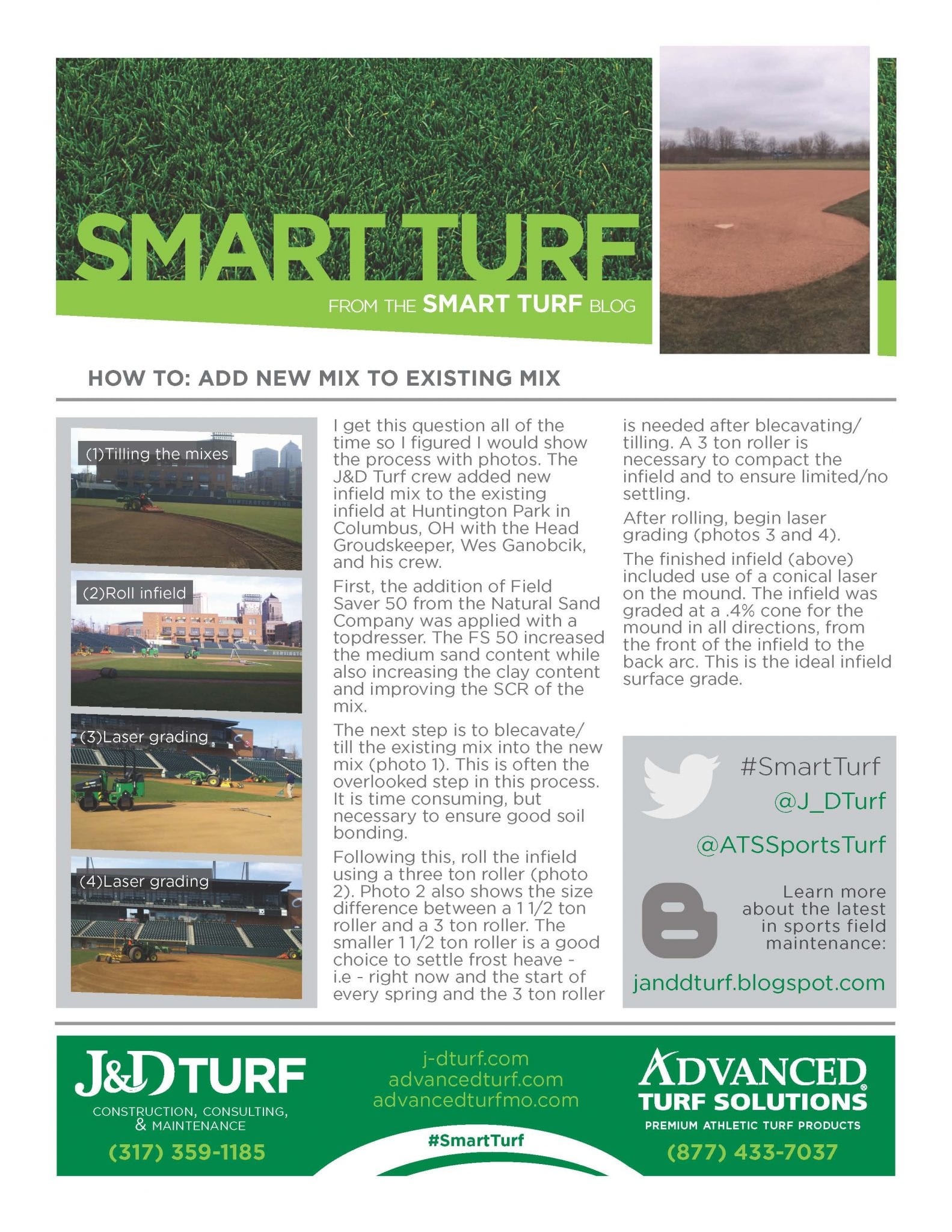May 04, 2016 at 7:40 am
The next step is to blecavate/ till the existing mix into the new mix (photo 1). This is often the overlooked step in this process. It is time consuming, but necessary to ensure good soil bonding. Following this, roll the infield using a three ton roller (photo 2). Photo 2 also shows the size difference between a 1 1/2 ton roller and a 3 ton roller. The smaller 1 1/2 ton roller is a good choice to settle frost heave – i.e – right now and the start of every spring and the 3 ton roller is needed after blecavating/ tilling. A 3 ton roller is necessary to compact the infield and to ensure limited/no settling. After rolling, begin laser grading (photos 3 and 4). The finished infield (above) included use of a conical laser on the mound. The infield was graded at a .4% cone for the mound in all directions, from the front of the infield to the back arc. This is the ideal infield surface grade.
Following this, roll the infield using a three ton roller. The photo below also shows the size difference between a 1 1/2 ton roller and a 3 ton roller. The smaller 1 1/2 ton roller is a good choice to settle frost heave – i.e – right now and the start of every spring and the 3 ton roller is needed after blecavating/tilling. A 3 ton roller is necessary to compact the infield and to ensure limited/no settling.
After rolling, begin laser grading.
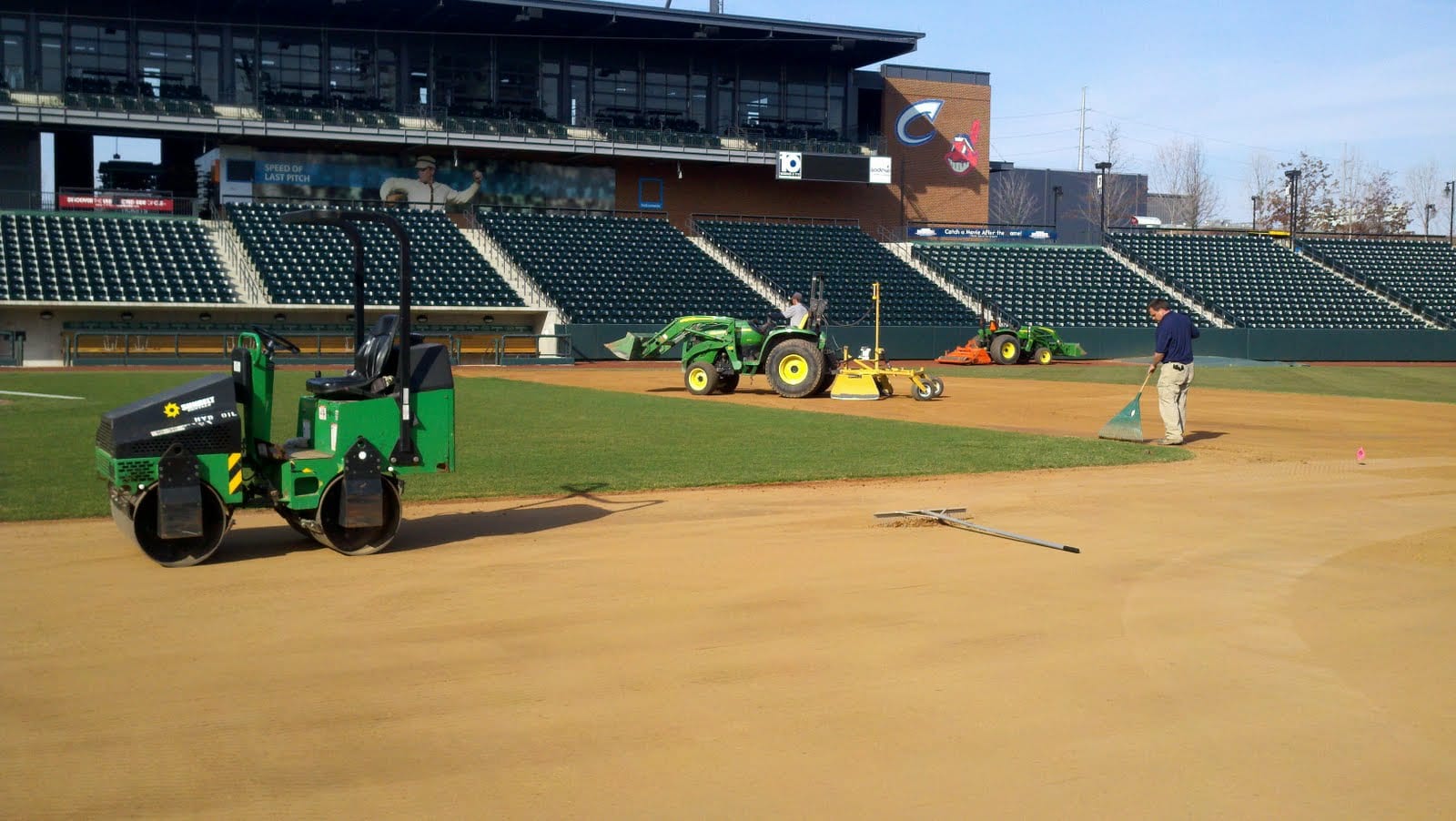 |
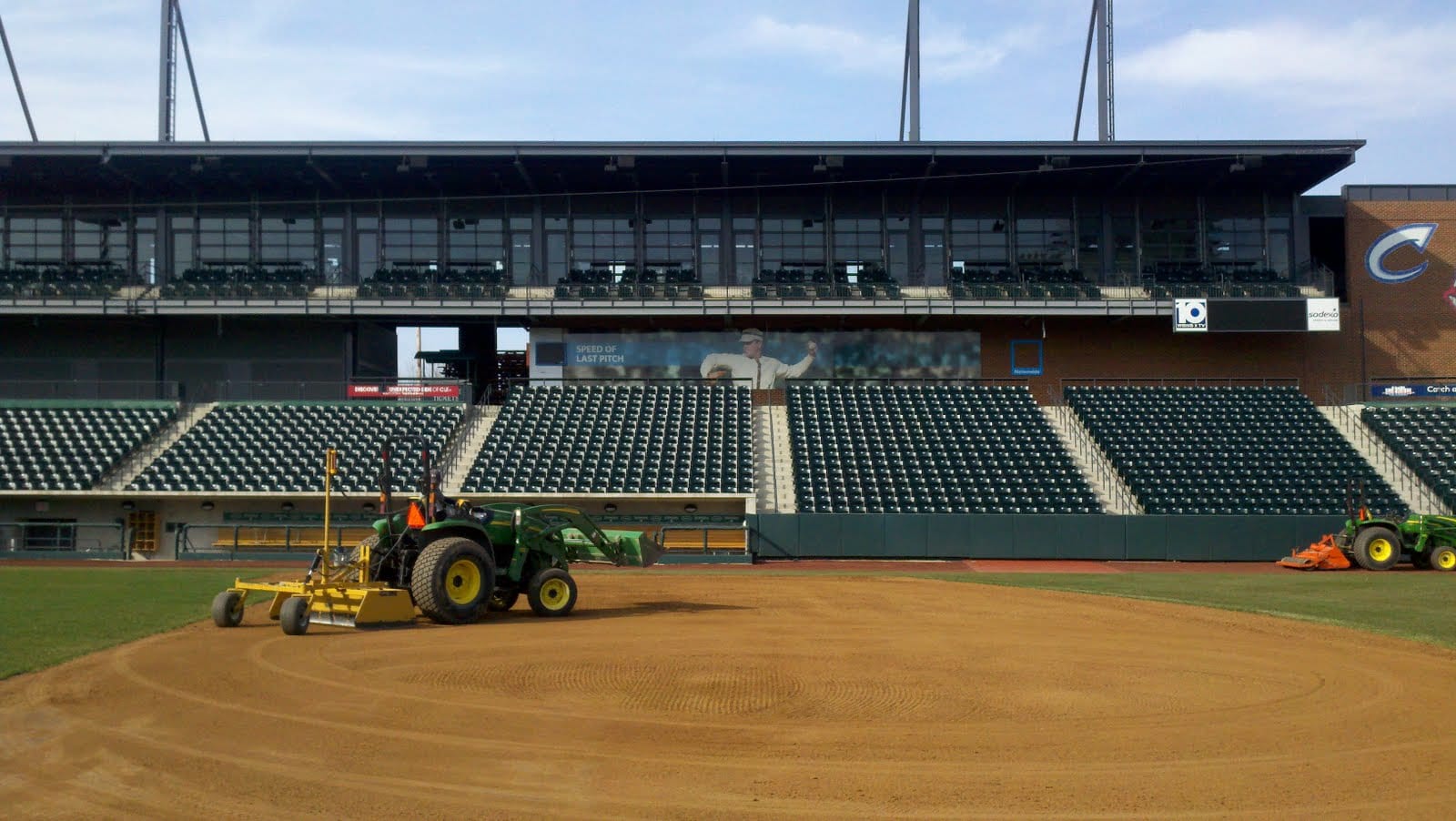 |
| Laser grading |
Laser grading |
The finished infield (above) included use of a conical laser on the mound. The infield was graded at a .4% cone for the mound in all directions, from the front of the infield to the back arc. This is the ideal infield surface grade.
Download the printable Smart Turf sheet – How To: Add New Mix to Existing Mix
This post originally appeared in the Smart Turf Blog.
